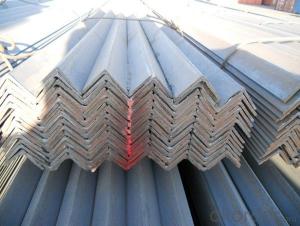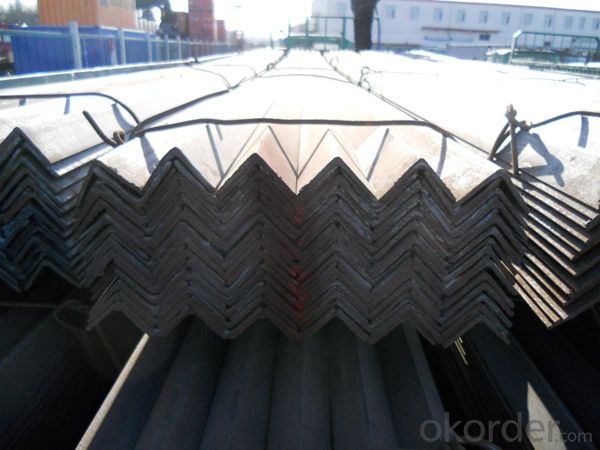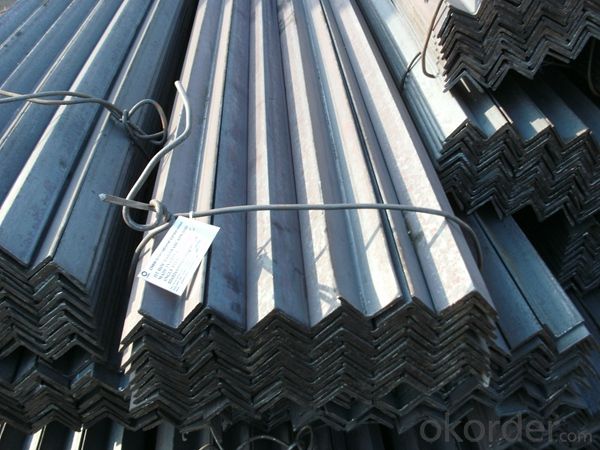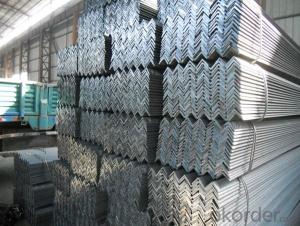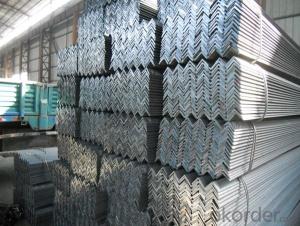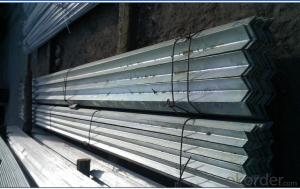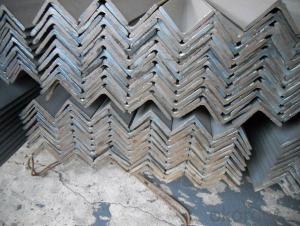High Quality Steel Angle Beams for Structure and Construction
- Loading Port:
- Tianjin
- Payment Terms:
- TT or LC
- Min Order Qty:
- 25 m.t.
- Supply Capability:
- 200000 m.t./month
OKorder Service Pledge
OKorder Financial Service
You Might Also Like
Product Description:
OKorder is offering High Quality Steel Angle Beams for Structure and Construction at great prices with worldwide shipping. Our supplier is a world-class manufacturer of steel, with our products utilized the world over. OKorder annually supplies products to African, South American and Asian markets. We provide quotations within 24 hours of receiving an inquiry and guarantee competitive prices.
Product Applications:
High Quality Steel Angle Beams for Structure and Construction are ideal for structural applications and are widely used in the construction of buildings and bridges, and the manufacturing, petrochemical, and transportation industries.
Product Advantages:
OKorder's High Quality Steel Angle Beams for Structure and Construction are durable, strong, and wide variety of sizes.
Main Product Features:
· Premium quality
· Prompt delivery & seaworthy packing (30 days after receiving deposit)
· Can be recycled and reused
· Mill test certification
· Professional Service
· Competitive pricing
Product Specifications:
Manufacture: Hot rolled
Grade: Q195 – 235
Certificates: ISO, SGS, BV, CIQ
Length: 6m – 12m, as per customer request
Packaging: Export packing, nude packing, bundled
| EQUAL ANGLE STEEL | |||||
| size(mm) | a(mm) | a1(mm) | thickness(mm) | kg/m | length |
| 50*50*4 | 50 | 50 | 4 | 3.059 | 6m,9m,12m |
| 50*50*5 | 50 | 50 | 5 | 3.77 | 6m,9m,12m |
| 50*50*6 | 50 | 50 | 6 | 4.465 | 6m,9m,12m |
| 63*63*5 | 63 | 63 | 5 | 4.822 | 6m,9m,12m |
| 63*63*6 | 63 | 63 | 6 | 5.721 | 6m,9m,12m |
| 65*65*5 | 65 | 65 | 5 | 5 | 6m,9m,12m |
| 65*65*6 | 65 | 65 | 6 | 5.91 | 6m,9m,12m |
| 65*65*8 | 65 | 65 | 8 | 7.66 | 6m,9m,12m |
| 75*75*5 | 75 | 75 | 5 | 5.818 | 6m,9m,12m |
| 75*75*6 | 75 | 75 | 6 | 6.905 | 6m,9m,12m |
| 75*75*8 | 75 | 75 | 8 | 9.03 | 6m,9m,12m |
| 75*75*9 | 75 | 75 | 9 | 9.96 | 6m,9m,12m |
| 75*75*10 | 75 | 75 | 10 | 11.089 | 6m,9m,12m |
| 80*80*6 | 80 | 80 | 6 | 7.375 | 6m,9m,12m |
| 80*80*7 | 80 | 80 | 7 | 8.525 | 6m,9m,12m |
| 80*80*8 | 80 | 80 | 8 | 9.658 | 6m,9m,12m |
| 80*80*10 | 80 | 80 | 10 | 11.874 | 6m,9m,12m |
| 90*90*6 | 90 | 90 | 6 | 8.35 | 6m,9m,12m |
| 90*90*7 | 90 | 90 | 7 | 9.656 | 6m,9m,12m |
| 90*90*8 | 90 | 90 | 8 | 10.946 | 6m,9m,12m |
| 90*90*10 | 90 | 90 | 10 | 13.476 | 6m,9m,12m |
| 100*100*6 | 100 | 100 | 6 | 9.366 | 6m,9m,12m |
| 100*100*7 | 100 | 100 | 7 | 10.83 | 6m,9m,12m |
| 100*100*8 | 100 | 100 | 8 | 12.276 | 6m,9m,12m |
| 100*100*9 | 100 | 100 | 9 | 13.49 | 6m,9m,12m |
| 100*100*10 | 100 | 100 | 10 | 15.12 | 6m,9m,12m |
| 100*100*12 | 100 | 100 | 12 | 17.898 | 6m,9m,12m |
| 120*120*8 | 120 | 120 | 8 | 14.88 | 6m,9m,12m |
| 120*120*10 | 120 | 120 | 10 | 18.37 | 6m,9m,12m |
| 120*120*12 | 120 | 120 | 12 | 21.66 | 6m,9m,12m |
| 125*125*8 | 125 | 125 | 8 | 15.504 | 6m,9m,12m |
| 125*125*10 | 125 | 125 | 10 | 19.133 | 6m,9m,12m |
| 125*125*12 | 125 | 125 | 12 | 22.696 | 6m,9m,12m |
| 130*130*10 | 130 | 130 | 10 | 19.8 | 6m,9m,12m |
| 130*130*12 | 130 | 130 | 12 | 23.6 | 6m,9m,12m |
| 130*130*13 | 130 | 130 | 13 | 25.4 | 6m,9m,12m |
| 130*130*14 | 130 | 130 | 14 | 27.2 | 6m,9m,12m |
| 150*150*10 | 150 | 150 | 10 | 23 | 6m,9m,12m |
| 150*150*12 | 150 | 150 | 12 | 27.3 | 6m,9m,12m |
| 150*150*14 | 150 | 150 | 14 | 31.6 | 6m,9m,12m |
| 150*150*15 | 150 | 150 | 15 | 33.8 | 6m,9m,12m |
| 140*140*10 | 140 | 140 | 10 | 21.49 | 6m,9m,12m |
| 140*140*12 | 140 | 140 | 12 | 25.52 | 6m,9m,12m |
| 140*140*14 | 140 | 140 | 14 | 29.49 | 6m,9m,12m |
| 160*160*10 | 160 | 160 | 10 | 24.73 | 6m,9m,12m |
| 160*160*12 | 160 | 160 | 12 | 29.39 | 6m,9m,12m |
| 160*160*14 | 160 | 160 | 14 | 33.99 | 6m,9m,12m |
| 180*180*12 | 180 | 180 | 12 | 33.16 | 6m,9m,12m |
| 180*180*14 | 180 | 180 | 14 | 39.39 | 6m,9m,12m |
| 180*180*16 | 180 | 180 | 16 | 43.45 | 6m,9m,12m |
| 180*180*18 | 180 | 180 | 18 | 48.63 | 6m,9m,12m |
| 200*200*14 | 200 | 200 | 14 | 42.89 | 6m,9m,12m |
| 200*200*16 | 200 | 200 | 16 | 48.68 | 6m,9m,12m |
| 200*200*18 | 200 | 200 | 18 | 54.4 | 6m,9m,12m |
| 200*200*20 | 200 | 200 | 20 | 60.06 | 6m,9m,12m |
| 200*200*24 | 200 | 200 | 24 | 71.17 | 6m,9m,12m |
FAQ:
Q1: Why buy Materials & Equipment from OKorder.com?
A1: All products offered byOKorder.com are carefully selected from China's most reliable manufacturing enterprises. Through its ISO certifications, OKorder.com adheres to the highest standards and a commitment to supply chain safety and customer satisfaction.
Q2: How do we guarantee the quality of our products?
A2: We have established an advanced quality management system which conducts strict quality tests at every step, from raw materials to the final product. At the same time, we provide extensive follow-up service assurances as required.
Q3: what is the difference between actual weight and theoretical weight?
A3: All the section steel has two weights: actual weight and theoretical weight. Actual weight is the weighing out when the product delivered from the mill. Theoretical weight is calculated by pieces. The invoice can be based on each of them as your request.
Images:
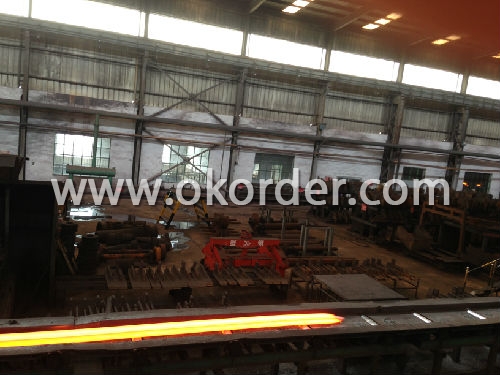
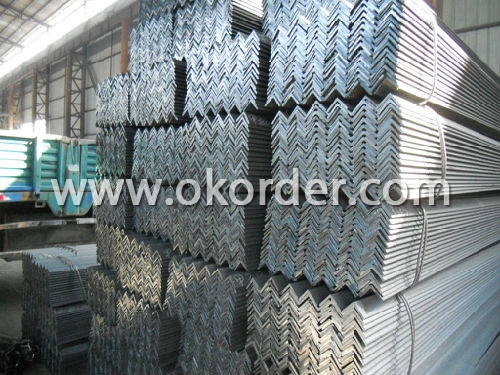
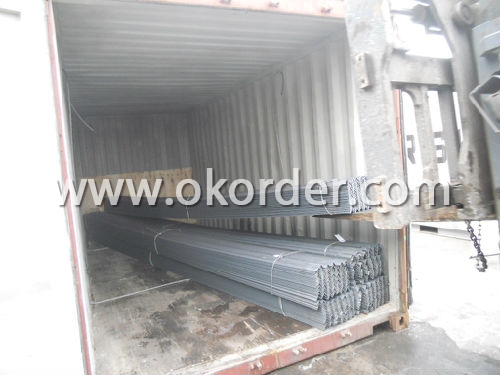
- Q: Can steel angles be used for support columns?
- Yes, steel angles can be used for support columns. Steel angles are commonly used in construction as structural elements for providing support and stability to various building components. They are particularly suitable for use as support columns due to their strength, durability, and load-bearing capacity. Steel angles can be designed and fabricated to meet specific structural requirements, making them an ideal choice for supporting heavy loads or providing vertical support in different building applications. Additionally, steel angles offer versatility in terms of size, shape, and connection options, allowing for customized column designs that can effectively distribute loads and ensure structural integrity. Overall, steel angles are a reliable and widely used choice for support columns in various construction projects.
- Q: What are the common bending or forming processes used for steel angles?
- The common bending or forming processes used for steel angles include cold bending, hot bending, roll forming, and press brake forming.
- Q: Can steel angles be used for manufacturing safety barriers?
- Yes, steel angles can be used for manufacturing safety barriers. Steel angles are commonly used in construction projects due to their strength and durability. They are particularly suitable for safety barriers as they provide a sturdy framework that can withstand impact and provide protection. Steel angles can be easily welded or bolted together to create a solid and secure barrier. Additionally, steel angles can be galvanized or coated with anti-corrosive materials to enhance their longevity and resistance to environmental factors. Overall, steel angles are an excellent choice for manufacturing safety barriers due to their strength, durability, and versatility.
- Q: Can steel angles be used in electrical or telecommunications installations?
- Indeed, steel angles find utility in electrical or telecommunications installations. Due to their robustness and resilience, steel angles frequently grace construction ventures. In the realm of electrical or telecommunications installations, steel angles function as dependable support brackets. These brackets furnish a steadfast framework on which to mount equipment, be it electrical panels, junction boxes, or communication cabinets. By affording unwavering stability, steel angles ensure the equipment's secure and immovable placement. Furthermore, steel angles serve to fabricate cable trays and support structures, thus facilitating the organization and routing of cables. The adaptability and potency of steel angles render them an ideal selection for diverse applications within electrical and telecommunications installations.
- Q: Can steel angles be used as lintels or supports for openings?
- Yes, steel angles can be used as lintels or supports for openings. Steel angles are commonly used in construction to distribute the load from above openings such as windows and doors, providing structural support and stability. They are strong, durable, and can be easily customized to fit the required dimensions, making them a suitable choice for lintels or supports in various construction projects.
- Q: How do you calculate the compression strength of a steel angle?
- In order to calculate the compression strength of a steel angle, one must take into account both its geometric properties and the material properties of the steel. First and foremost, it is necessary to determine the cross-sectional area of the steel angle. This can be accomplished by multiplying the angle's thickness by the flange's width and then subtracting the area of any holes or cutouts present in the angle. Following this, it is imperative to ascertain the yield strength of the steel. The yield strength denotes the maximum stress that the steel can endure before undergoing permanent deformation. This information is usually obtainable from either the steel manufacturer or reference materials. Once the cross-sectional area and the yield strength have been determined, the compression strength can be calculated using the following formula: Compression strength = Yield strength * Cross-sectional area It is important to bear in mind that this calculation assumes that the steel angle is solely subjected to a compressive load, devoid of any bending or torsional forces. If the angle is exposed to other types of loading, such as bending or torsion, additional calculations or testing may be necessary in order to accurately ascertain its strength.
- Q: Can steel angles be bolted together?
- Indeed, it is possible to bolt steel angles together. Steel angles find frequent application in construction and fabrication endeavors, and bolting emerges as a prevalent technique for their connection. By bolting steel angles together, a robust and reliable linkage is achieved, capable of enduring substantial loads and forces. Typically, the angles are drilled with holes at designated intervals, through which bolts are inserted and secured with nuts, thereby fastening the angles together. This approach facilitates effortless disassembly and reassembly when necessary, rendering it a versatile and pragmatic option for joining steel angles.
- Q: What is the keel of the aluminum single board suspended or the welded frame of angle steel?
- The marking order of light steel keel is: product name, code name, width of section shape, height, steel plate thickness and standard number. Such as cross section shape is "C" type, width of 50mm, height of 15mm, steel plate thickness of 1.5mm ceiling keel marked: construction light steel keel.
- Q: Can steel angles be used for balcony railings?
- Yes, steel angles can be used for balcony railings. Steel angles are commonly used in construction for their strength and durability. They provide structural support and can be easily customized to fit the specific dimensions and design requirements of a balcony railing. Additionally, steel angles can be painted or coated to match the desired aesthetic of the balcony. However, it is important to ensure that the steel angles used meet the necessary safety standards and building codes to ensure the stability and security of the balcony railing.
- Q: How do you calculate the deflection of a loaded steel angle?
- To calculate the deflection of a loaded steel angle, you need to consider several factors and apply the principles of structural engineering. Here is a step-by-step guide on how to do it: 1. Determine the load: First, you need to know the magnitude and distribution of the load applied to the steel angle. This could be a point load, uniformly distributed load, or a combination of both. 2. Identify the properties of the steel angle: Obtain the dimensions and material properties of the steel angle. This includes the length, width, thickness, and the modulus of elasticity (E) for the steel material. The modulus of elasticity represents the stiffness of the material. 3. Determine the support conditions: Assess how the steel angle is supported. This could be simply supported at both ends, fixed at one end, or a combination of fixed and simply supported conditions. Different support conditions will yield different deflection formulas. 4. Select an appropriate deflection formula: Depending on the load and support conditions, choose the relevant deflection formula from a reference source such as a structural engineering handbook. There are various formulas available, including those specifically designed for angles subjected to bending. 5. Plug in the values: Substitute the known values, such as load magnitude, angle dimensions, and material properties, into the selected deflection formula. Ensure that the units are consistent. 6. Solve for deflection: Perform the necessary calculations to determine the deflection of the loaded steel angle. The result will be in units of length (e.g., inches or millimeters). 7. Verify the deflection: If possible, compare the calculated deflection with the allowable deflection specified in relevant design codes or standards. This will help ensure that the angle is not deflecting beyond acceptable limits. Remember, calculating the deflection of a loaded steel angle is an engineering task that requires knowledge of structural principles and the use of appropriate formulas. If you are unsure or dealing with complex scenarios, it is recommended to consult a professional structural engineer for accurate and reliable calculations.
Send your message to us
High Quality Steel Angle Beams for Structure and Construction
- Loading Port:
- Tianjin
- Payment Terms:
- TT or LC
- Min Order Qty:
- 25 m.t.
- Supply Capability:
- 200000 m.t./month
OKorder Service Pledge
OKorder Financial Service
Similar products
Hot products
Hot Searches
Related keywords
